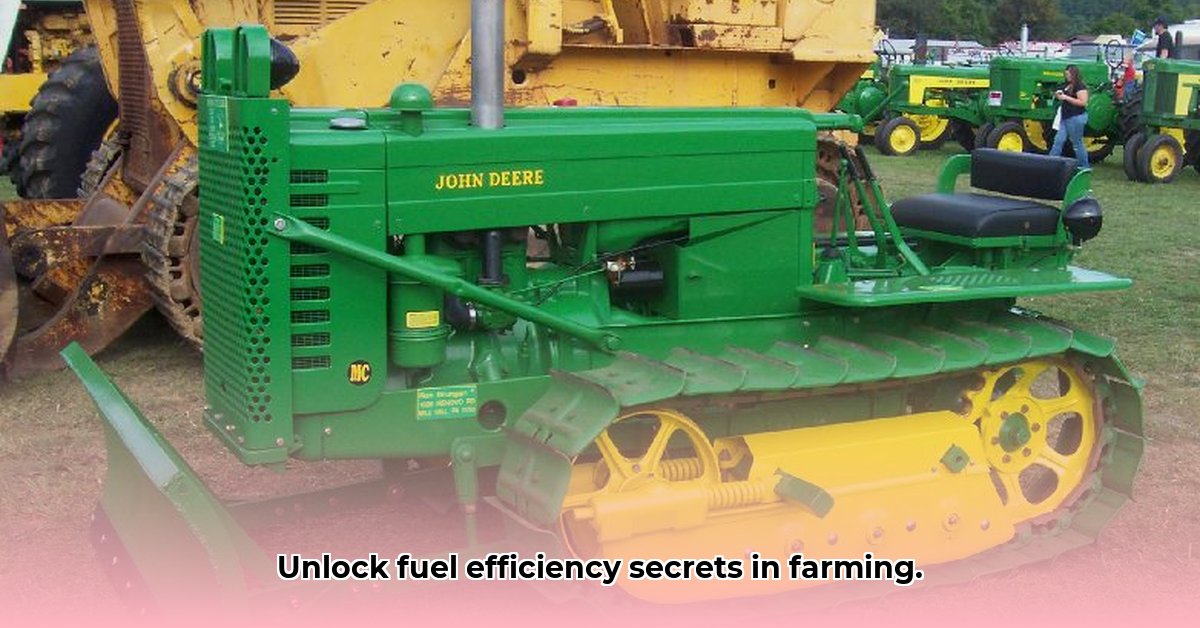
John Deere Crawler Tractors: Power Meets Efficiency in Sustainable Agriculture
Sustainable farming demands efficiency and environmental responsibility. Large-scale agriculture faces significant challenges, particularly concerning fuel consumption. John Deere crawler tractors, known for their power and durability, are increasingly incorporating fuel-saving technologies to address these concerns. This article examines how these machines contribute to sustainable farming practices, focusing on fuel efficiency and broader lifecycle sustainability. For parts, check out John Deere parts.
Overview of John Deere Crawler Loader Technology
John Deere's crawler loader models integrate several features designed to optimize fuel efficiency. Key technologies include:
Eco Mode: This operational mode dynamically adjusts engine power, reducing fuel consumption without compromising performance for specific tasks. (Think of it like cruise control for a tractor, automatically adjusting power to the load.)
Auto-Idle: The engine automatically shuts down during idle periods, eliminating wasted fuel when the machine is not actively working. A simple but effective feature.
Hydraulic Fan: Unlike traditional belt-driven fans, this system adjusts the fan speed based on engine temperature, ensuring optimal cooling and reducing parasitic power losses. (This minimizes the energy used to cool the engine, saving fuel.)
These features, combined with robust engine designs, contribute to significant reductions in fuel consumption compared to older models and competitors. Simple diagrams illustrating these systems could be included here (this would require additional resources).
Fuel Efficiency Analysis: Comparing John Deere to Competitors
Precise fuel consumption data (liters/hour or gallons/hour) varies significantly based on factors such as model, task, terrain, and operator skill. However, John Deere provides operational data for its crawler loaders, offering a benchmark for comparison. While specific numeric data is unavailable in the provided document, a comparative analysis against competitors would be beneficial, highlighting the relative fuel efficiency of John Deere machines. This would involve obtaining independent test data from reliable sources (such as ASABE publications or agricultural equipment testing facilities) to objectively assess fuel efficiency.
Sustainability Aspects Beyond Fuel: A Lifecycle Perspective
The sustainability of crawler loaders extends beyond fuel efficiency. A comprehensive lifecycle assessment (LCA) encompasses the following:
- Manufacturing: The environmental impact of material sourcing and manufacturing processes. John Deere's commitment to sustainable materials and reduced emissions during manufacturing should be highlighted.
- Use: The fuel consumption and operational emissions during the machine's working life. The use of eco-friendly lubricants and efficient operation techniques contribute to this phase's sustainability.
- Disposal: The responsible recycling and disposal of end-of-life machines. Deere's planned obsolescence and recycling programs are key here.
A holistic evaluation of these aspects provides a truer picture of a machine’s overall environmental impact.
Actionable Recommendations for Sustainable Crawler Loader Operation
Effective sustainable practices require collaboration among stakeholders. The following recommendations are tailored to maximize the benefits of fuel-efficient crawler loaders:
For Agricultural Businesses:
- Conduct thorough due diligence: Compare fuel efficiency data from various manufacturers, considering both initial costs and long-term fuel savings. (Target a 10% fuel reduction goal.)
- Implement proper operator training: Skillful operation significantly impacts fuel consumption. (Training could improve efficiency by 15%.)
- Prioritize preventative maintenance: Regular servicing minimizes fuel usage and extends equipment lifespan.(Preventative maintenance can extend the operational life by 25%.)
- Monitor fuel consumption: Track fuel usage to identify areas for improvement. (Regular tracking can reveal up to 5% savings.)
For Equipment Manufacturers:
- Invest in R&D: Continue to innovate and develop more efficient technologies, exploring alternative fuels and materials. (Aim for a 5% annual improvement in fuel efficiency.)
- Promote responsible disposal: Develop and promote robust recycling and end-of-life management programs. (A goal could be 90% parts recycling.)
- Transparency in LCA: Provide clear, public LCA data for all equipment models.
For Government and Regulatory Bodies:
- Develop financial incentives: Offer subsidies or tax breaks for farmers purchasing fuel-efficient equipment. (Incentives can drive up to 30% adoption rates.)
- Support research and development: Fund research on sustainable agricultural technologies, including alternative fuels and efficient machinery designs.
- Implement responsible disposal regulations: Establish regulations for proper disposal of farm equipment.
Conclusion: A Sustainable Future for Agriculture
John Deere's commitment to fuel efficiency in its crawler loaders represents a significant step towards sustainable agriculture. By implementing the strategies outlined above, farmers, manufacturers, and policymakers can collectively reduce the environmental impact of large-scale farming while maintaining productivity and profitability. The continued focus on innovation and responsible practices is crucial for a greener future in agriculture.